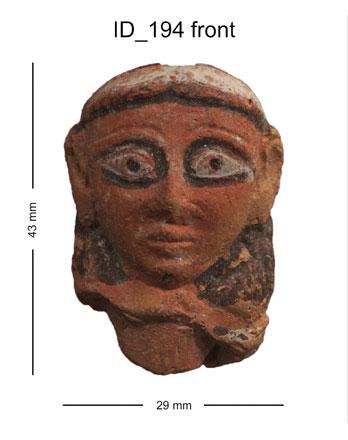- Local News
- Sun-2020-08-09 | 03:50 pm

While preparing an article on the Levantine female ceramic figurines, Regine Hunziker-Rodenwald, who is affiliated with the University of Strasbourg, discovered typological diversity of their shapes, particularly their faces.
"The team, began cataloguing during several research stays the female terracotta figurines from Transjordan kept in museums, storage facilities and university collections in Jordan, the United States and Canada,” noted Hunziker-Rodenwald, professor of Old Testament Studies and Ancient Near East History at the Faculty of Protestant Theology, in a recent e-mail interview with The Jordan Times.
The scholar said that the figurines’ iconography refers to a certain function in ritual practices linked to the female reproductive life and could therefore reveal important socio-cultural information on women’s roles within the population of Transjordan in the first millennium BC.
"Several of the female figurines from Transjordan were excavated in or close to sanctuaries [eg Amman Citadel]. In these cases, the question of the provenance of the figurines in a local, regional or transregional context is particularly interesting,” Hunziker-Rodenwald elaborated.
Elemental analyses of the clay by means of X-ray, CT scan and related technologies could contribute to illuminating the sociological structure of population movements between centre and periphery in Iron Age Transjordan, she said.
Another point of interest is the analysis of the fingerprints on these ceramic figurines, the scholar said.
"We are in contact with researchers in forensic studies in order to find out who produces these female figurines, men, women or children?” according to Hunziker-Rodenwald.
The dominant manufacturing process of the potters east of the Jordan River was the technique of molding by using open molds from which the figurine emerged with a flat or slightly convex back side, and these mold-made figurines were mass-produced, Hunziker-Rodenwald said.








